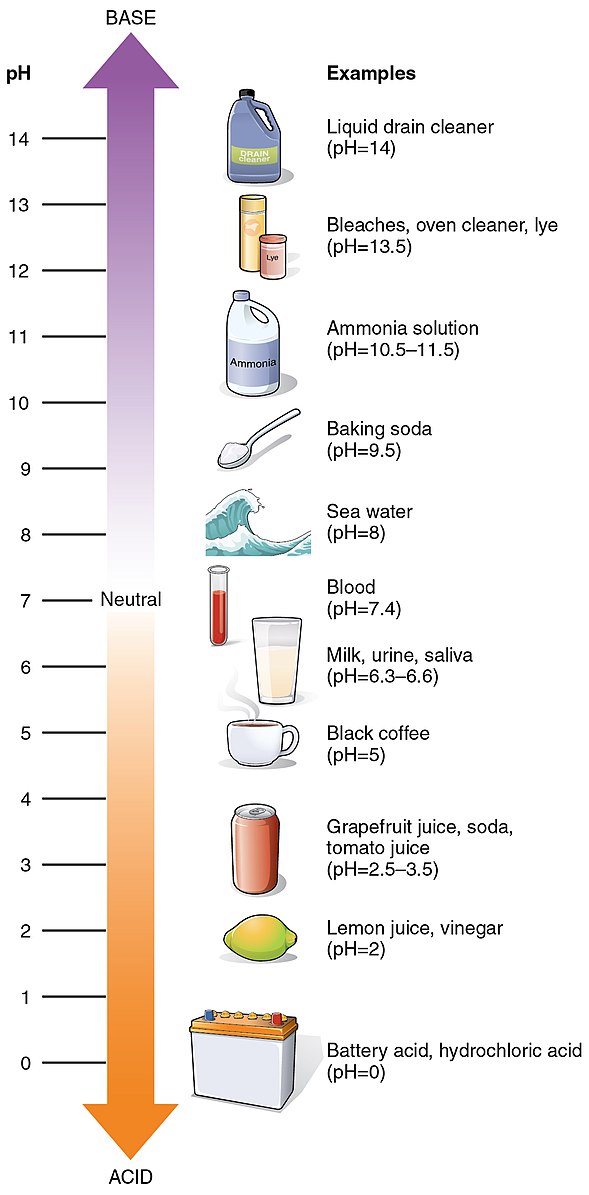Tartaric acid is a naturally occurring organic acid found in various fruits, most notably grapes. When dissolved in water, this strong acid can significantly lower the pH, making it an important component in food preparation and winemaking. In this comprehensive blog post, we’ll delve into the intricacies of the pH of tartaric acid in water, its solubility, and the factors that influence its behavior.
Understanding the Acidity of Tartaric Acid
Tartaric acid is a diprotic acid, meaning it has two hydrogen atoms that can dissociate in water, resulting in a pH that can range from around 2.5 to 4.4. The first dissociation constant (pKa1) of tartaric acid is 2.89, while the second dissociation constant (pKa2) is 4.40.
When tartaric acid is added to pure water, the pH of the solution will drop from around 7 (neutral) to approximately 2.5. This dramatic decrease in pH is due to the strong acidic nature of tartaric acid, which releases hydrogen ions (H+) into the solution, increasing its acidity.
To achieve a specific pH value, such as 3.5, you can use the Henderson-Hasselbalch equation to calculate the amount of tartaric acid required. For example, to reach a pH of 3.5 in 0.41 liters of distilled water, you would need to add approximately 1.44 grams of tartaric acid.
It’s important to note that the relationship between the amount of tartaric acid added and the resulting pH is not linear, as the pH scale is logarithmic. This means that small changes in the amount of tartaric acid can lead to significant changes in the pH of the solution.
Solubility and Tartrate Formation
 Image source: OpenStax College
Image source: OpenStax College
Tartaric acid is highly soluble in water, with 1 gram of the acid dissolving in 0.8 milliliters of water. It is also soluble in other organic solvents, such as ethanol and methanol.
When tartaric acid is dissolved in water, it can form salts with various cations, such as sodium, potassium, and calcium. These salts, known as tartrates, can have different solubility properties and pH values compared to the acid itself.
The formation of tartrates can be important in various applications, such as winemaking, where the precipitation of potassium bitartrate (cream of tartar) can affect the clarity and stability of the wine.
Reactions and Complexation
Tartaric acid can participate in various chemical reactions, including oxidation and reduction reactions. For example, it can be oxidized to tartronic acid using nitric acid.
Additionally, tartaric acid can form complexes with different metal ions, such as copper and iron. These complexes can have unique properties and may be utilized in various industries, such as in the production of certain pharmaceuticals or as chelating agents.
Toxicity and Safety Considerations
While tartaric acid is generally safe to consume in small amounts as a food additive, it can be toxic in high doses. The LD50 (lethal dose for 50% of the population) for tartaric acid is over 500 grams for a human.
Tartaric acid is considered a muscle toxin and can cause paralysis and even death in large quantities. Therefore, it is essential to exercise caution when handling and using tartaric acid, especially in industrial or laboratory settings.
Conclusion
The pH of tartaric acid in water is a crucial factor to consider in various applications, from food preparation to winemaking. Understanding the acidity, solubility, and reactivity of this organic acid can help you effectively manage and control the pH of your solutions, ensuring optimal results and safety.
By exploring the intricacies of the pH of tartaric acid in water, you can gain valuable insights that can be applied in a wide range of industries and research areas. Whether you’re a food scientist, a winemaker, or a chemist, this knowledge can be invaluable in your work.
References:
- Managing pH and TA in Wine
- How much tartaric acid would I need to add to water to achieve a pH of 3.5?
- Calculate pH of 0.2 M solution of tartaric acid, Calculate the volume of 0.1 M solution of NaOH required to neutralize 20 ml of 0.2 M tartaric acid solution. Final pH should be pKa of tartaric acid.
- L-Tartaric acid
- pH of organic acids
- Tartaric acid
